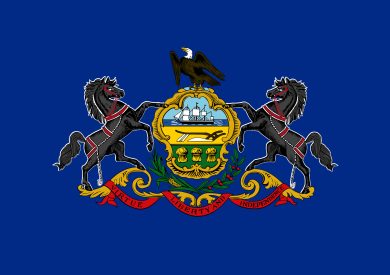
 Popular Cities For Lending in Pennsylvania
Popular Cities For Lending in Pennsylvania
Lancaster
Levittown
Norristown
Philadelphia
Pittsburgh
Reading
Scranton
State College
Wilkes-Barre
York
In the Pennsylvania real estate market, grabbing properties before your competition is essential for making the best deals. Although real estate investors sometimes go the traditional route and seek bank loans, the process is anything but speedy.
When time is of the essence, waiting for the lengthy process of getting approval is not an option for most investors. Pennsylvania hard money lenders specialize in providing hard money loans which provide quick funds to investors. These loans are for a non owner occupied property or in some cases for business purpose loans.
Pennsylvania Hard Money Lender FAQ’S
Below are some of the most frequently asked questions we get regarding hard money loans and lenders in Pennsylvania.
What Do Pennsylvania Hard Money Lenders Specialize in?
Pennsylvania hard money lenders specialize in providing short-term, creative financing for real estate investors. If you seek a conventional lender to purchase an investment property, your loan request will be based on the property’s value and your assets. Your credit score, job, and finances will be scrutinized intensely. Hard money lenders base their final loan decisions on the after-repair value. The ARV represents the potential value of a property after all repairs have been accomplished.
What are the Benefits of Pennsylvania Hard Money Loans?
Pennsylvania hard money loans offer advantages that traditional banks cannot. Lenders like Acamnet Financial offer a higher level of flexibility than banks. When qualifying for this type of loan, lenders do not delve too deeply into the finances of real estate investors. In most cases, simply present the property and your plans, which saves you the hassle of gathering countless financial documents.
Do Pennsylvania Hard Money Lenders Look at my Credit Score?
One of the greatest benefits of working with Pennsylvania hard money lenders is the lack of credit score requirements. One of the first things a bank does is check your credit score. You can get approved for a hard money loan in Pennsylvania even if you have bad credit or poor credit, bankruptcies, and foreclosures in the past. Pennsylvania Hard money lenders primarily care about the property you are purchasing.
What is the Interest Rate & Points for Hard Money Loans in Pennsylvania?
Interest rates for hard money loans in Pennsylvania are typically higher than traditional bank loans (conventional loans) because of the greater risk lenders must take on when approving loans. When searching for a hard money lender near me in Pennsylvania, you will find average interest rate is between 8%-15%. You should also be aware that lenders sometimes charge points that are meant to offset their administrative costs. Each point represents 1% of the total loan amount. The average points lenders charge is between 1 to 3. Some lenders may charge up to 10 points. These points are due upfront or at closing, depending on the lender.
What Should I Look for in a Pennsylvania Hard Money Lender?
There are many benefits to working with a Pennsylvania hard money lender. You just need to make sure you are working with the right lender. You can rely on Acamnet Financial Group when you need us most. We offer reliability, consistency, experience, and support. As a real estate investor, you know the importance of grabbing the best property deals when they become available.
How can Hard Money Lenders in Pennsylvania Help Me?
Whether you are new to real estate and real estate projects or an old pro, you know having the capital to purchase real estate is essential. Without funds, you will miss out on real estate transactions. When you partner with hard money lenders in Pennsylvania, you will quickly get the money you need without jumping through the hoops of traditional bank lenders.
How do I get a Hard Money Loan in Pennsylvania?
When you want a hard money loan in Pennsylvania, begin by preparing the property information. Location, size, purchase price, after repair value, repair costs, etc. In most cases, the financing will be based on these numbers. Then, apply for a hard money loan in Pennsylvania using this information and supply some financial information. Then, an appraisal will be ordered to assess the loan-to-value ratio, which will influence the loan amount.
How do I Refinance a Pennsylvania Hard Money Loan?
Refinance a Pennsylvania hard money loan will involve moving from a high interest, short term loan to a longer term, usually lower interest rate loan. Typically a conventional type of loan. When refinancing a Pennsylvania hard money loan you will find it will have a more stringent set of guidelines. You will need to have sufficient credit and income qualifications. As the lending landscaping and regulations constantly change, you want to consult a knowledgeable conventional loan expert.

Current Real Estate Trends In Pennsylvania (2024)
The real estate market in Pennsylvania has recently gone through a period of stagnation. Various elements have affected the housing market, with home prices forecasted to decrease by almost 20% and mortgage rates having experienced a notable increase from April 2021 to June 2023. Potential risks associated with interest rate hikes and a housing market recession could be to blame for this shift in rates.
Low inventory and few new listings add to the current market conditions in the state. Nonetheless, Pennsylvania still has a number of advantages compared to other markets. There has been a 95.36% increase in the number of listings, indicating an increase in inventory. However, homes are staying on the market for an average of 29 days, which is longer than in previous years.
Analysts predict a slowdown in the housing market for 2023, but not a crash. As mortgage rates begin to stabilize, buyers are beginning to enter the market again.
This article will provide an analytical and data-driven overview of the present real estate trends in Pennsylvania, examining key updates, home buying and selling, and market predictions.
Housing Market Update
Pennsylvania’s housing market is showing signs of a slowdown. Home prices have dropped by nearly 20%, and the amount of time spent on the market has risen to 29 days. These developments indicate a shift in the balance between buyers and sellers.
The current real estate climate in the Keystone State is now one of caution. Buyers and sellers are taking a more conservative stance as they navigate the changing market conditions. Prices have gone down from post-pandemic highs and homes are staying on the market longer, leading to a slower pace of sales.
It is clear that the Pennsylvania housing market is experiencing a period of adjustment. Though the future of the market is uncertain, buyers and sellers should take this time to be mindful and prepared as they navigate the changing landscape.
Home Buying and Selling
Homebuyers and sellers in the state face issues due to ever-changing market conditions and high mortgage rates. Despite these difficulties, there are ways to navigate the current real estate market in Pennsylvania.
Doing thorough research on pricing trends and competition can help.
Getting preapproved for a mortgage to determine affordability and boosting negotiation power is also beneficial.
Being ready to make competitive offers and taking quick action in a market with limited inventory is essential.
Keeping up with local and national factors that can influence the market is also key.
Market Predictions
Experts in the market predict a gradual slowing in the housing market of Pennsylvania with both buyers and sellers experiencing a cooling effect. Several reasons are behind this prediction, including a decrease in home sales and fewer listings. Prices could potentially drop, although not to the levels seen during the Great Recession. Pennsylvania’s home sale median price is still attractive to buyers, and national trends still have an impact on the housing market.
Sources
https://www.houzeo.com/blog/pennsylvania-real-estate-market/
https://www.bankrate.com/real-estate/housing-market/pennsylvania/
https://www.noradarealestate.com/blog/philadelphia-real-estate/

All About Pennsylvania
Pennsylvania, situated in the Mid-Atlantic and Northeastern regions of the United States, is renowned for its diverse geography, including the Appalachian and Pocono Mountains.
With over 13 million residents, it is the fifth-most populous state in the country.
Pennsylvania possesses a rich history, tracing back to its establishment in 1681 through a land grant to William Penn. The state played a significant role in the American Revolution and was the second state to ratify the US Constitution.
Moreover, evidence of human habitation in Pennsylvania dates back thousands of years, indicating a robust indigenous history.
The state’s largest metropolitan areas are Philadelphia in the southeast and Pittsburgh in the southwest.
Pennsylvania boasts a diverse economy, with a notable presence of manufacturing and abundant natural resources like coal, natural gas, and timber. Additionally, the state is committed to environmental preservation and has a thriving agricultural industry.
This article provides an informative overview of Pennsylvania, encompassing various aspects such as its population, cities, history, indigenous settlement, and geography.
Pennsylvania Overview
Pennsylvania, a state in the Mid-Atlantic, Northeastern, Appalachian, and Great Lakes regions of the United States, is characterized by its diverse geography, including the Appalachian and Pocono Mountains, and is home to over 13 million residents.
It borders Delaware, Maryland, West Virginia, Ohio, Lake Erie, Ontario, New York, and New Jersey. The state capital is Harrisburg. Pennsylvania has a rich history, playing a significant role in the American Revolution and hosting the First and Second Continental Congress. It became the second state to ratify the US Constitution in 1787.
With its manufacturing-based economy, Pennsylvania contributed to developing the nation’s infrastructure. The state’s natural beauty and cultural contributions have shaped the nation’s history and development.
In the subsequent section about population and cities, we will explore Pennsylvania’s demographics and urban areas.
Population and Cities
The southeastern region of the state, known as the Delaware Valley metropolitan area, is the largest in terms of population. Centered around Philadelphia, this area is home to a significant portion of Pennsylvania’s residents. Philadelphia is the state’s largest city and an essential economic and cultural hub.
Greater Pittsburgh, located in the southwest, is the second-largest metropolitan area in Pennsylvania. Other cities with substantial populations include Allentown, Reading, Erie, Scranton, and Bethlehem. These cities contribute to the state’s overall population density, which ranks ninth in the country.
Moving on to the history of Pennsylvania, the state has played a significant role in various historical events and has a rich and diverse heritage.
Now, let’s delve into the history of Pennsylvania and explore its fascinating past.
History
During the colonial era, Pennsylvania played a crucial role in the American Revolution and served as the host for both the First and Second Continental Congresses. The state’s strategic location and significant population made it an important center for political and military activities during the Revolution.
The First Continental Congress, held in Philadelphia in 1774, brought together representatives from the thirteen colonies to discuss grievances against British rule. The Second Continental Congress, also held in Philadelphia, took more assertive action and ultimately declared independence from Britain, leading to the formation of the United States of America. These congresses laid the groundwork for the establishment of a new nation.
In the subsequent section about the indigenous settlement, it is essential to understand the historical context in which Native American tribes interacted with European settlers.
Indigenous Settlement
Human habitation in the now Pennsylvania area dates back thousands of years, with evidence of early human activity found at sites like Meadowcroft Rockshelter in Jefferson Township. This rock shelter contains signs of human activity over 10,000 years ago, making it one of the oldest known sites in North America.
By 1000 CE, Native American tribes in Pennsylvania had developed agricultural techniques, growing crops such as corn, beans, and squash. The Lenape and Susquehannock were significant tribes in the region, living in villages and engaging in trade and warfare. These indigenous peoples had a deep connection to the land and its resources, shaping Pennsylvania’s early history and culture.
Transitioning into the subsequent section about ‘geography and rivers,’ Pennsylvania’s rich indigenous history is closely tied to its diverse natural environment and the vital role that rivers played in shaping the lives of its inhabitants.
Geography and Rivers
Geographically diverse and characterized by its abundant waterways, Pennsylvania’s landscape showcases the vital role rivers play in shaping the region’s history and development.
Pennsylvania is known for having the most navigable rivers of any state, including the Allegheny, Delaware, Ohio, and Susquehanna rivers. These rivers have played a significant role in the state’s transportation, industry, and trade throughout history.
The Delaware River, which forms part of Pennsylvania’s eastern border, has been an important trade route since colonial times. The Susquehanna River, the longest river on the East Coast, has provided water power for industries and served as a transportation artery.
The state’s rivers have also contributed to developing cities like Philadelphia and Pittsburgh, serving as hubs for commerce and industry.
Additionally, Pennsylvania’s rivers offer recreational opportunities, attracting tourists and nature enthusiasts to engage in activities such as boating, fishing, and wildlife observation.


 Popular Cities For Lending in Pennsylvania
Popular Cities For Lending in Pennsylvania